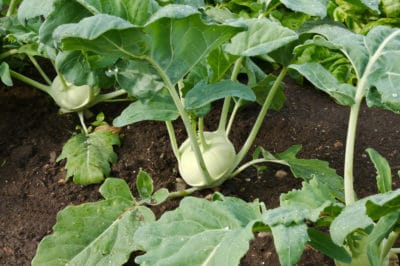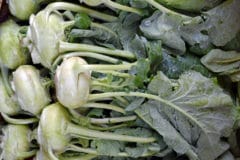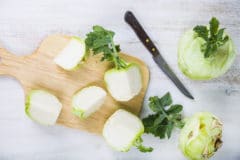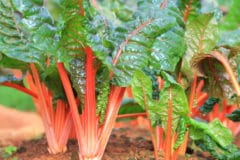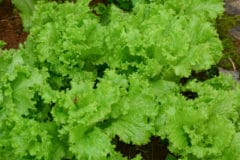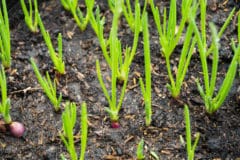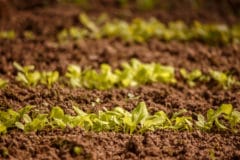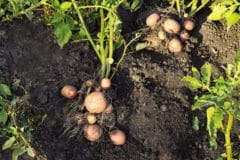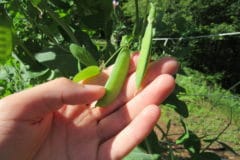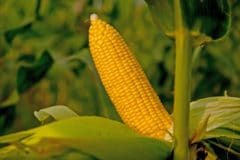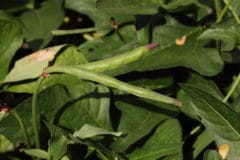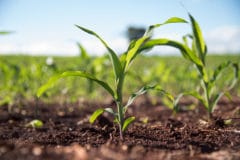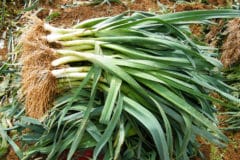How To Plant Kohlrabi
It’s all about timing with brassicas. Look at the days to maturity on the seed packet, on average Kohlrabi takes between 45-65 days. Plan your planting date so that they will mature before temperatures in your region reach 75°F (23.8°C). For an early start, plant seeds in a greenhouse or protected area 8-10 weeks before the last frost. Plants can come outside 4 weeks before the last frost.
Kohlrabi requires full sun. One drawback to planting it in a warm and sunny location is that preventing it from getting too hot can be challenging. Shade cloth or row covers can prevent the plants from bolting or stems turning woody during heat spells.
Use potting soil or amend your planting bed with plenty of organic matter and rich compost. Kohlrabi requires a lot of nutrients to grow large so fast. Sow seeds 1/4 inch deep and when they sprout, thin them to 6-inch spacing.
How To Care For Kohlrabi
There isn’t much care associated with such a fast growing vegetable. Mulching the plants when they are tall enough will help reduce water use, keep the roots cool, and prevent disease. Some popular varieties include:
- Early Purple Vienna – Purple (55 days)
- Superschmelz – Green with large bulbs (60 days)
- Kolibri – White and purple-veined hybrid (45 Days)
Companion planting can help to shade sensitive plants, bring in beneficial insects, prevent pest and disease issues, and even help feed the plant nutrients. One great companion for Kohlrabi is beans. They fix nitrogen from the air and store it in their roots making it available for the Kohlrabi plants to consume. Other good companions are:
- Beets
- Celery
- Cucumber
- Lettuce
Other cabbage family members are not recommended for companion planting because they tend to attract the same pests.
How to Harvest Kohlrabi
It’s better to harvest early rather than late. Kohlrabi becomes tough and woody as it matures. Bulbs are sweet and ready to eat as soon as they are 2-3 inches across, though some Kohlrabi bulbs can reach 8 to 10 inches. Cut them off at the base of the stem with a sharp knife. The leaves are also edible and cook up like collard greens.
For storage, remove all the leaves and stems and store the bulb in plastic. Place the bag in a fridge or a root cellar for up to two months.
